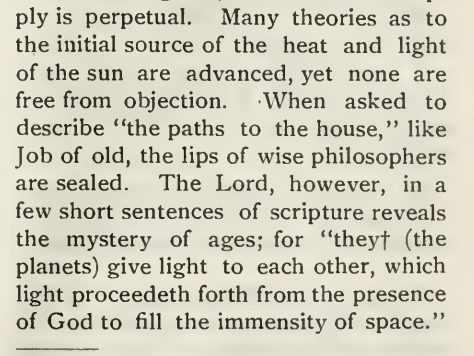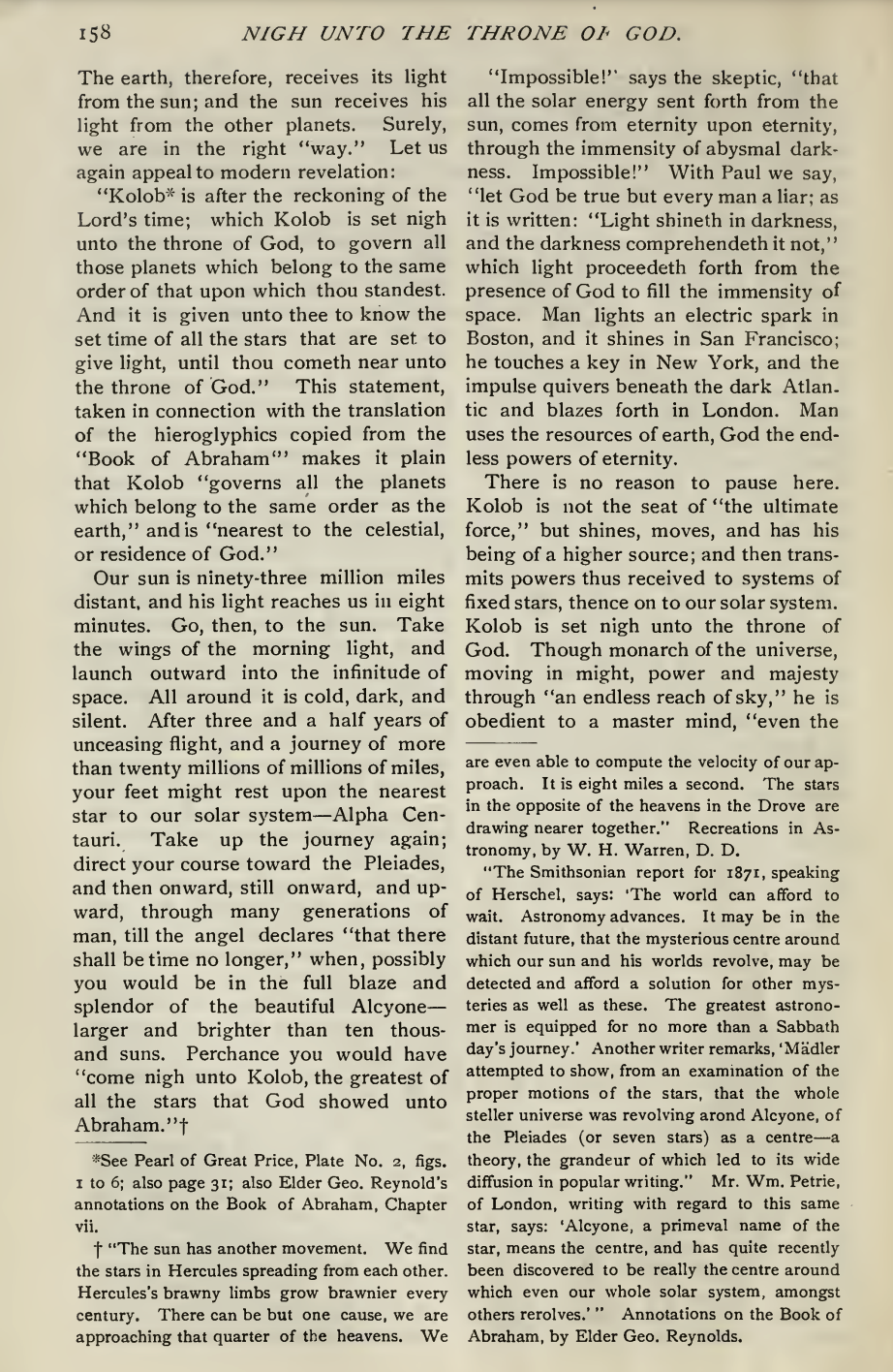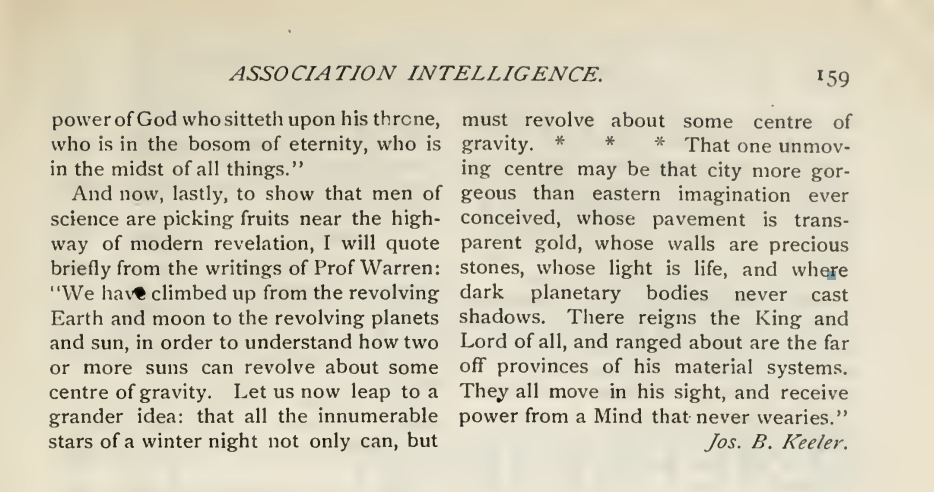Joseph B. Keeler discusses the cosmology of the BOA; posits that the sun receives light from Kolob near God's presence.
- Type
- Periodical
- Source
- Joseph B. Keeler LDS
- Hearsay
- Direct
- Reference
Joseph B. Keeler, "The Manner or the Man," The Contributor 10, no. 4 (February 1889): 157–159
- Scribe/Publisher
- The Contributor
- Audience
- Latter-day Saints, Reading Public
- Transcription
Many theories as to the initial source of the heat and light of the sun are advanced, yet none are free from objection. When asked to describe "the paths to the house," like Job of old, the lips of wise philosophers are sealed. The Lord, however, in a few short sentences of scripture reveals the mystery of ages; for "they (the planets) give light to each other, which light proceedeth forth from the presence of God to fill the immensity of space."
The earth, therefore, receives its light from the sun; and the sun receives his light from the other planets. Surely, we are in the right "way." Let us again appeal to modern revelation:
"Kolob is after the reckoning of the Lord's time; which Kolob is set nigh unto the throne of God, to govern all those planets which belong to the same order of that upon which thou standest. And it is given unto thee to know the set time of all the stars that are set to give light, until thou cometh near unto the throne of God." This statement, taken in connection with the translation of the hieroglyphics copied from the "Book of Abraham" makes it plain that Kolob "governs all the planets which belong to the same order as the earth," and is "nearest to the celestial, or residence of God."
Our sun is ninety-three million miles distant, and his light reaches us in eight minutes. Go, then, to the sun. Take the wings of the morning light, and launch outward into the infinitude of space. All around it is cold, dark, and silent. After three and a half years of unceasing flight, and a journey of more than twenty millions of millions of miles, your feet might rest upon the nearest star to our solar system—Alpha Centauri. Take up the journey again; direct your course toward the Pleiades, and then onward, still onward, and upward, through many generations of man, till the angel declares "that there shall be time no longer," when, possibly you would be in the full blaze and splendor of the beautiful Alcyone—larger and brighter than ten thousand suns. Perchance you would have "come nigh unto Kolob, the greatest of all the stars that God showed unto Abraham."
"Impossible!" says the skeptic, "that all the solar energy sent forth from the sun, comes from eternity upon eternity, through the immensity of abysmal darkness. Impossible!" With Paul we say, "let God be true but every man a liar; as it is written: "Light shineth in darkness, and the darkness comprehendeth it not," which light proceedeth forth from the presence of God to fill the immensity of space. Man lights an electric spark in Boston, and it shines in San Francisco; he touches a key in New York, and the impulse quivers beneath the dark Atlantic and blazes forth in London. Man uses the resources of earth, God the endless powers of eternity.
There is no reason to pause here. Kolob is not the seat of "the ultimate force," but shines, moves, and has his being of a higher source; and then transmits powers thus received to systems of fixed stars, thence on to our solar system. Kolob is set nigh unto the throne of God. Though monarch of the universe, moving in might, power and majesty through "an endless reach of sky," he is obedient to a master mind, "even the power of God who sitteth upon his throne, who is in the bosom of eternity, who is in the midst of all things."
And now, lastly, to show that men of science are picking fruits near the highway of modern revelation, I will quote briefly from the writings of Prof Warren: "We have climbed up from the revolving Earth and moon to the revolving planets and sun, in order to understand how two or more suns can revolve about some centre of gravity. Let us now leap to a grander idea: that all the innumerable stars of a winter night not only can, but must revolve about some centre of gravity. * * * That one unmoving centre may be that city more gorgeous than eastern imagination ever conceived, whose pavement is transparent gold, whose walls are precious stones, whose light is life, and where dark planetary bodies never cast shadows. There reigns the King and Lord of all, and ranged about are the far off provinces of his material systems. They all move in his sight, and receive power from a Mind that never wearies."
- Citations in Mormonr Qnas
The B. H. Roberts Foundation is not owned by, operated by, or affiliated with the Church of Jesus Christ of Latter-day Saints.



